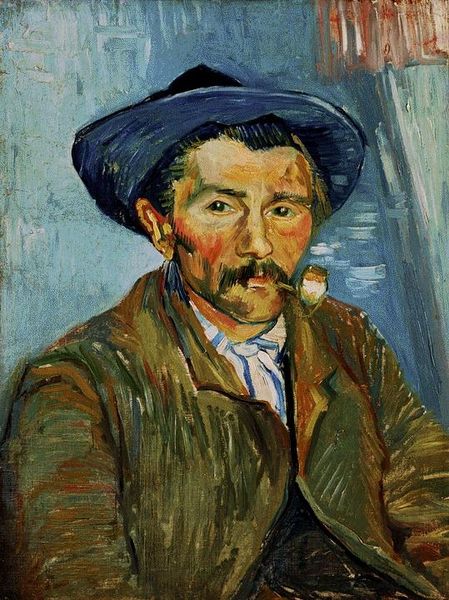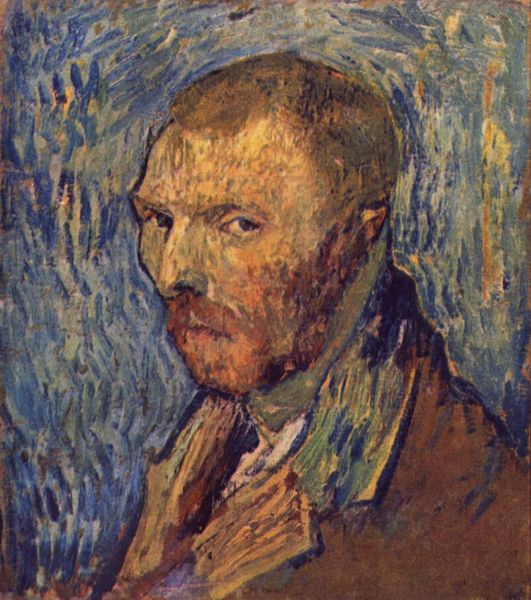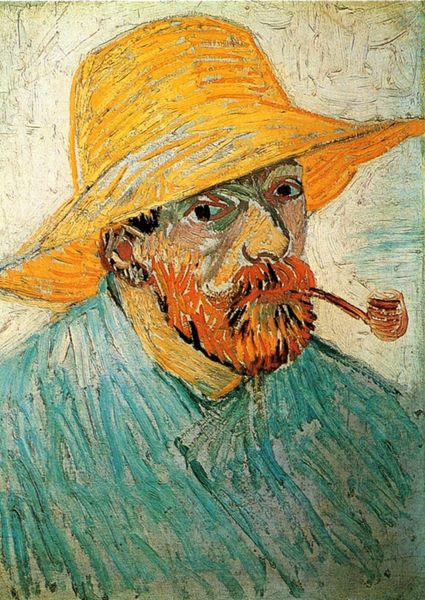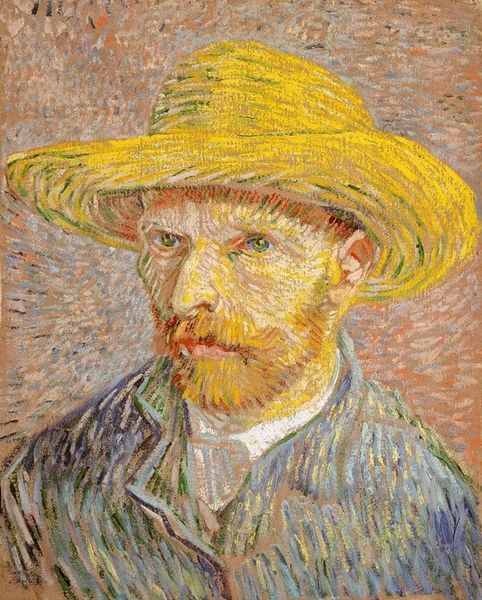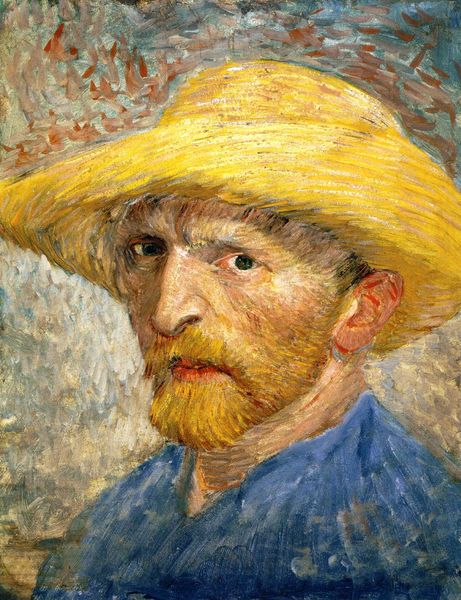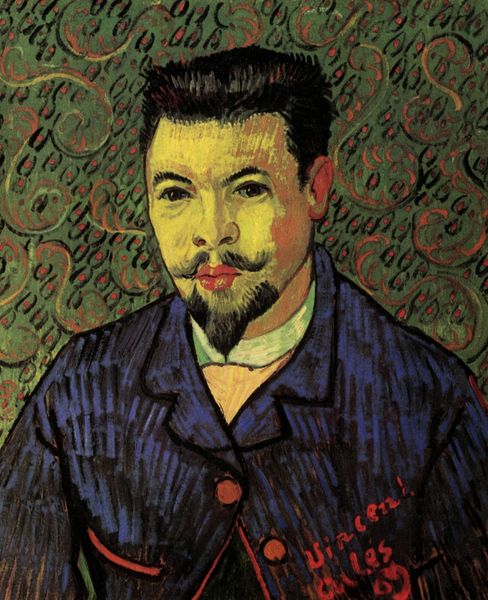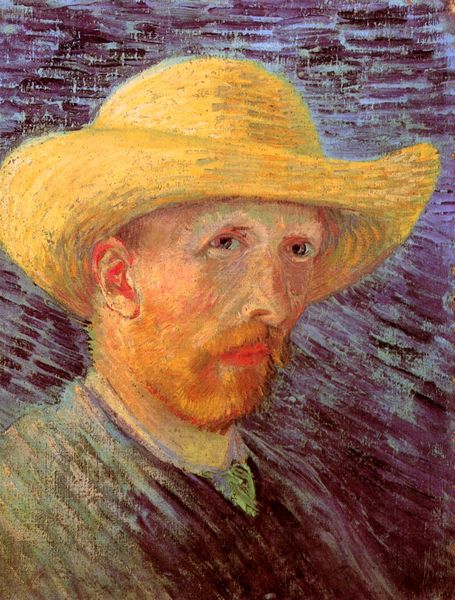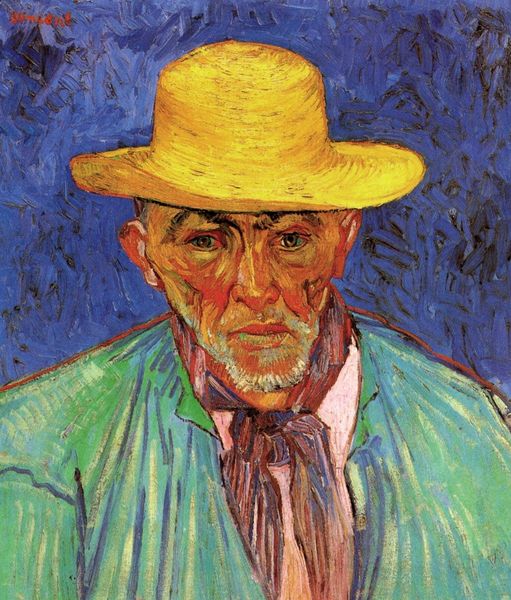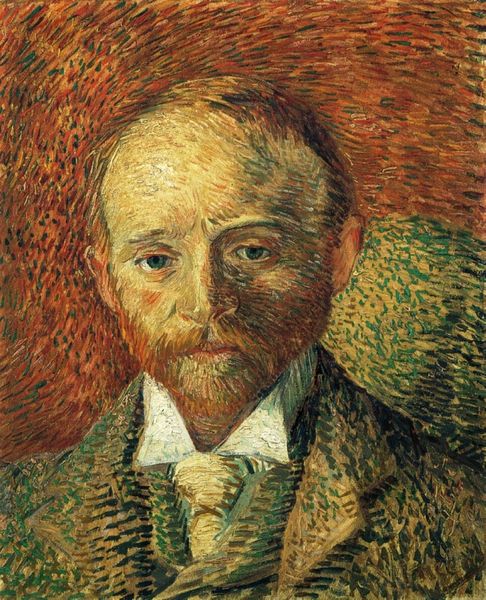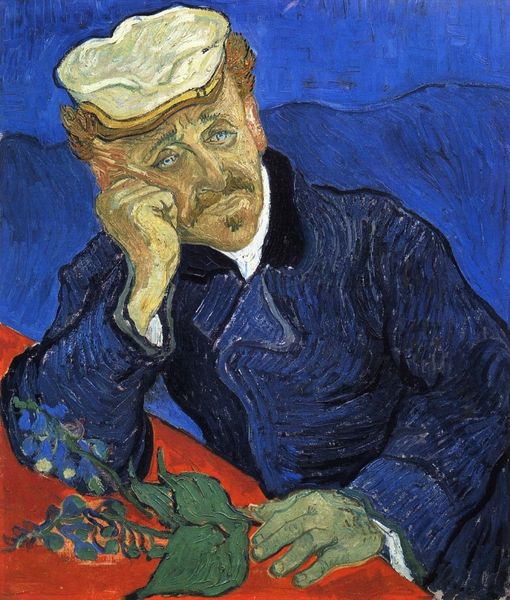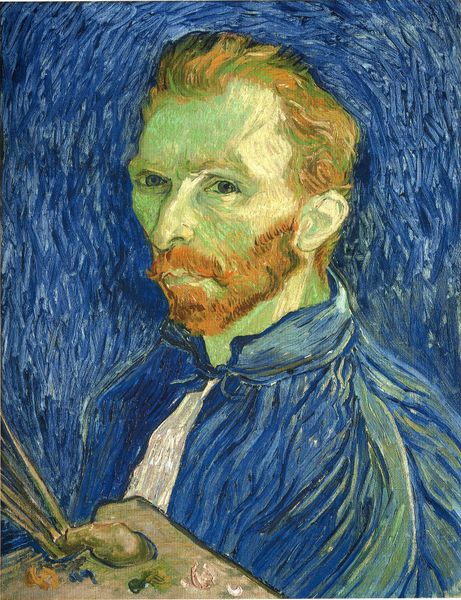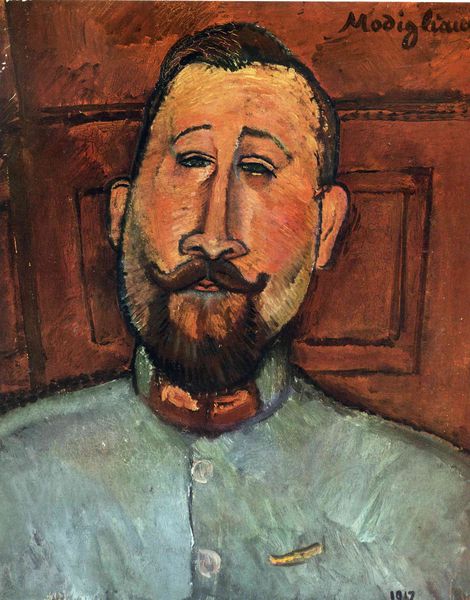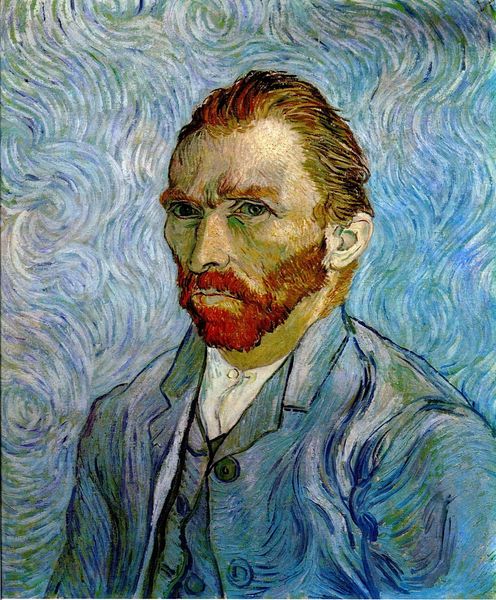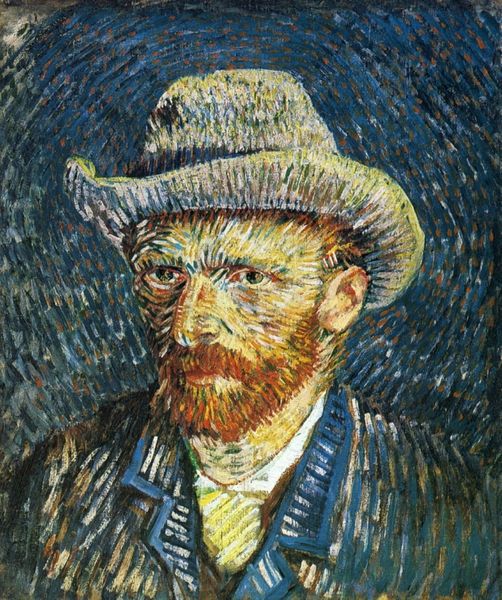
Copyright: Public domain
Curator: Here we have Van Gogh’s "Portrait of a One-Eyed Man," painted in 1888, currently housed here at the Van Gogh Museum in Amsterdam. Editor: The first thing that strikes me is the density of the oil paint – you can almost feel the texture. And the limited color palette gives it a somewhat melancholy feel. Curator: Absolutely. The impasto technique Van Gogh employed here is fascinating. The materiality of the paint itself becomes a key element of the portrait’s expressive power. You can practically trace the movement of his hand and the decisions he made with each stroke. We understand that Van Gogh’s choice of applying such a thick application also responded to what at the time, where trends and innovations concerning paint production and availability. Editor: It's also compelling to consider who this man was and why Van Gogh chose to paint him. Was he a fellow patient at the asylum? What stories did this one-eyed man carry, and how does the social context of Van Gogh's life influence our interpretation of the work? The portrait challenges romantic notions around disability during this period, making visible somebody that the institution may have otherwise wished to hide. Curator: The man’s gaze, averted from us, the way Van Gogh constructs depth. It raises questions about visibility and marginalization, something prevalent during the 19th century's. Consider the societal pressures surrounding disability at the time, alongside the painter's social circle, and you see the image gains social significance. The way art institutions value portraiture of certain societal figures. Editor: Right, and the fact that the portrait wasn’t titled with the sitter’s name but rather their ocular impairment. I am reminded how our contemporary art market reproduces the romantic trope of ‘the suffering artist’ selling a lifestyle that encourages neurosis and isolation in its artistic population, thus undermining a sustainable sense of creative community. Curator: A valuable point. Analyzing "Portrait of a One-Eyed Man" pushes us to reconsider the act of art production itself. What societal and economical framework of artistic labor can support healthier, socially progressive representation and production? Editor: Yes, a somber reminder, if there ever was one. Art as a conduit for self-discovery.
Comments
No comments
Be the first to comment and join the conversation on the ultimate creative platform.
